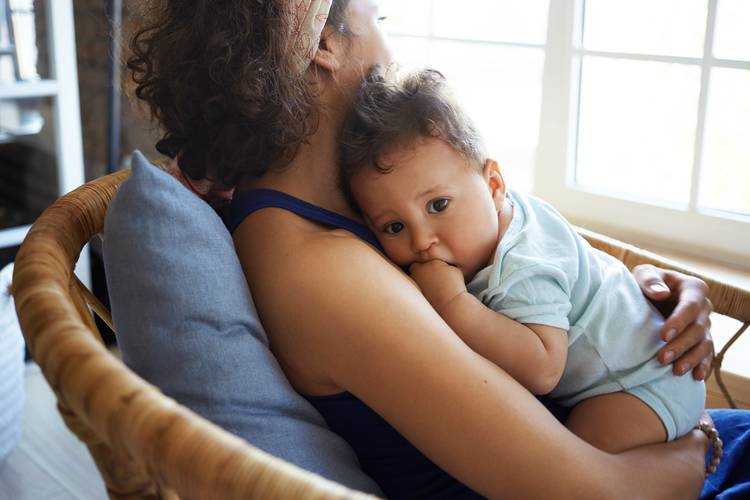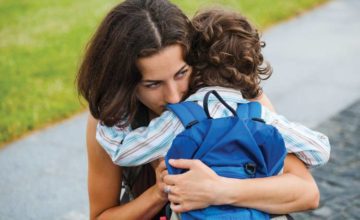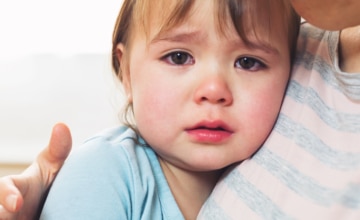Parenting experts at ZERO TO THREE, the leading nonprofit dedicated to ensuring babies and toddlers have a strong start in life, suggest these tips for parents and caregivers of babies and young children taking cover from the storm:
1. Create a calm space for your family
Being in a shelter is a disruption to the comforting routine and predictability of home and child care. The different noises, smells, people and general environment may cause your child to feel nervous. Arrange your personal area, such as your cots, to make your own space. Knowing that there is a space that you’ve made your own can feel comforting for the whole family.
2. Be present
During and after a disaster, predictability can be in short supply. But your child has your comforting presence. Move your child so that he or she is facing you while holding, feeding or playing. Use a soothing voice when speaking. Try moving to a rhythm—rock, sway, or gently bounce while you sing a song to calm your child. Assure your child that you will be with him or her throughout.
3. Keep routines consistent
Keep to your routines as much as you can—such as eating at a set time, then play, then nap, then more active play.
4. Bring along a cherished toy or blanket and extra snuggles
If you are planning to evacuate, make room for one of your child’s special stuffed animals, blankets, small toys or books. This special item can help your child as you all adapt to a new place for a few days, or longer. Young children may need more soothing physical touch than usual during this time as well. When surrounded by everything new, your little one is probably going to want his or her most loved and familiar person (you!) close by at all times.
5. Let your children know what’s happening and what’s coming next
Your child understands that things have changed or are different. Talk with your toddler about the event with simple and few words. End on a hopeful note. Example: “It’s scary when a big hurricane comes. Then it stops, and now we are getting help.” If your child asks questions or make requests regarding being in the shelter, validate feelings and give brief factual information, but not enough to be alarming. For example, if your child says, “I want to go home, Mommy,” you might reply, “I know! Me too, but tonight we are staying here together.”
6. Shield your child from frightening conversations or images
Try to keep scary images of the disaster away. Television and newspaper photographs of the event can be upsetting, as it may bring back scary feelings, or your child may think the event is happening again. Keep your child away from these outlets as much as possible and distract through stories, finger play (e.g. Itsy Bitsy Spider), or favorite songs.
7. Play, sing, and tell stories
While you may not feel much like playing, try to find some time to connect with your child in a playful way. This is a form of normalcy and helps him or her feel close to you.
8. Know that during this time your child may seem to lose some skills they’ve already gained
It’s perfectly normal for a child to “lose” some developmental skills during periods of intense family stress. For example, a child who is potty-trained may begin having accidents or a child who’s a good sleeper may begin waking up at night. Your child may also show less self-confidence and independence and want to stay close to you and be held more than usual. This “clinginess” is a way for them to feel safe and close to you, which is so important to them now.
Acknowledge what your child is telling you through their behavior by saying something such as, “You still remember the loud, scary wind and the big rain we had,” then help your child practice ways of self-soothing: “Let’s practice taking some deep breaths together. Sometimes that helps me when I get worried or nervous.”
9. After you and your child weathered the storm together, you may find that your child cries or fusses more, or seems to be too withdrawn, even after the event
Even days and weeks after a big scary event, children may still feel unsure and unsettled. They will need extra cuddling, play, and attention during this time, which can be tough since it’s likely you will be facing many demands in the aftermath. Be sure to tell your child when you have to leave him or her (avoid “sneaking out”) and consider using a routine—like a special kiss or song—to make the goodbye easier.
If your child’s behaviors persist, think about talking with his or her healthcare provider or seeking out a mental health provider with experience in supporting young children. It is common for both children and adults to need some additional support following a scary and sometimes traumatic event.




